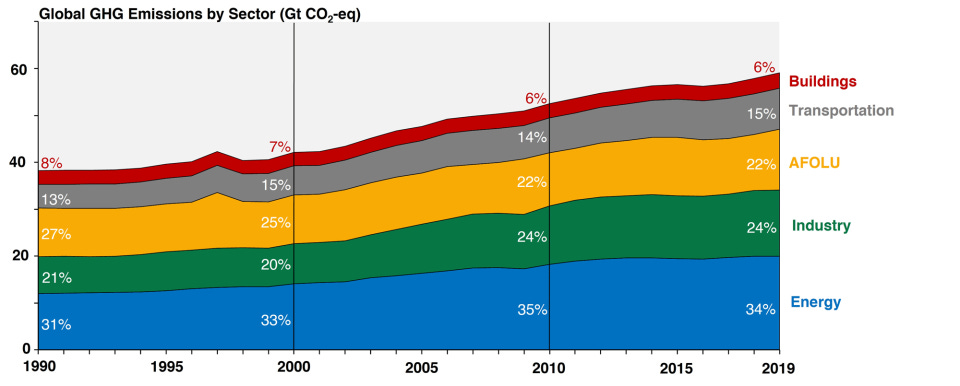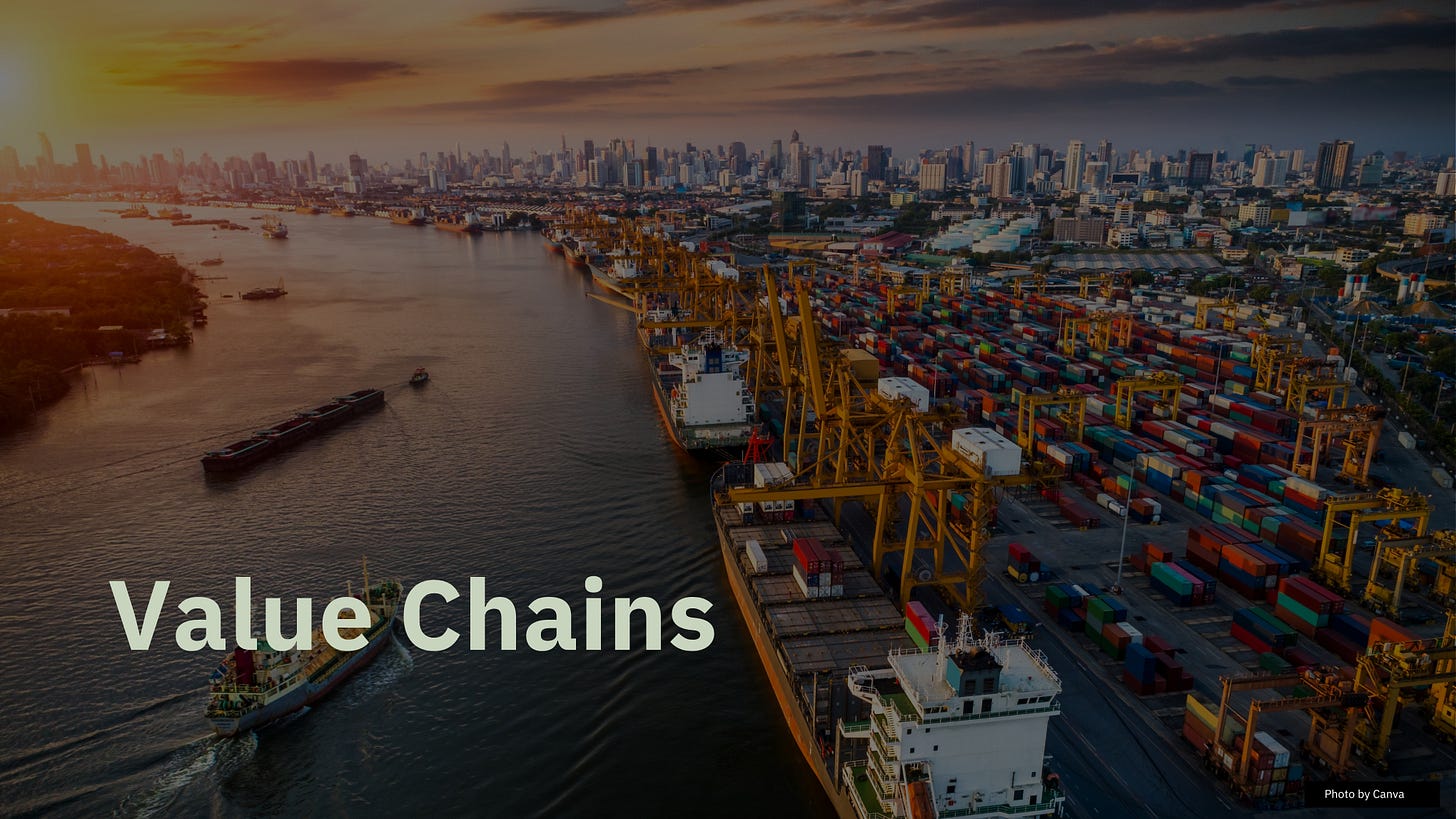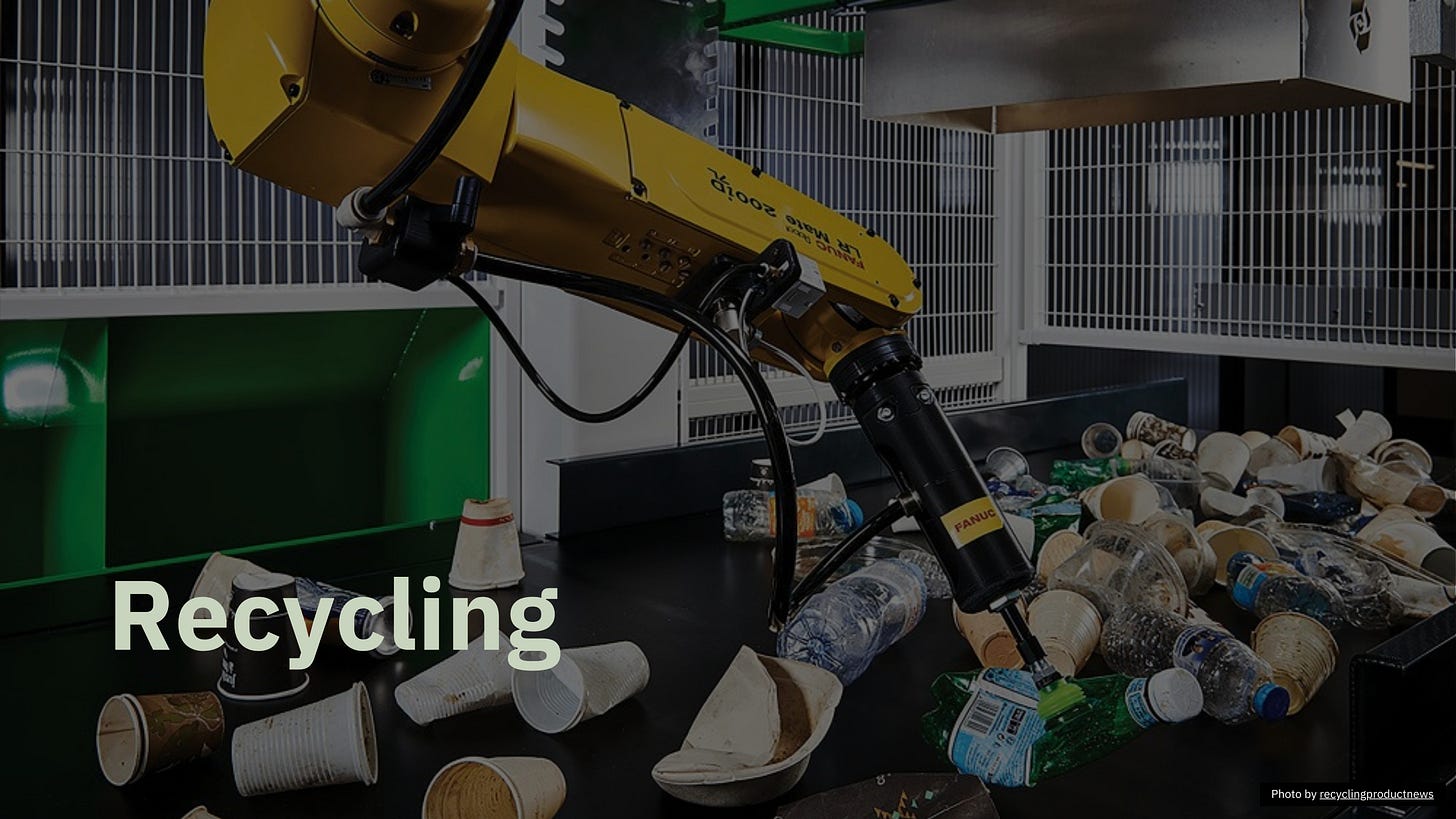The Potential Role of AI in Enhancing Sustainability Across Sectors: #1 Manufacturing
Explore how AI is transforming sustainability—from generative design to smart recycling. Discover real-world examples and the potential of this powerful synergy.
#1 Business Sustainability Insights
Hi Everyone!
If you’re a professional keen on exploring how sustainability and AI intersect in your industry, this is for you.
“Climate-related threats dominate the top 10 risks global populations will face.” – World Economic Forum
As environmental concerns take center stage in global discourse, artificial intelligence (AI) offers a beacon of hope for a more sustainable future.
While AI is often framed within dystopian narratives, it’s essential to remember that the impact of this technology depends on how we wield it. In the context of sustainability, the potential is truly transformative.
Consider this: A study published in Nature suggests that AI could contribute to achieving 79% of the Sustainable Development Goals (SDGs). This statistic alone underscores the transformative power of AI in driving a sustainable world.
The New Trinity: Technology, Nature, and Humanity
AI advancements have transformed technology from a mere tool into an active collaborator. Technology is no longer merely a passive tool. The shape of things to come will be unlike anything we've ever seen before. Why? Because what will be shaping those things is this new partnership between technology, nature, and humanity.
Until now, nature and humanity have been somewhat isolated in their relationship. But now, we're developing technology that can actively participate in the problem-solving and design process, saying, "No, this isn't optimal," and producing solutions that might be beyond our unaided imagination.
When it comes to addressing climate change, we're struggling to make sufficient progress on our own. We could certainly use all the help we can get.
We’re no longer just building tools; we’re fostering an ecosystem where technology becomes a partner in our quest for sustainability.
Breaking Down Global Emissions: Where Can AI Make an Impact?
Let’s take a look at global greenhouse gas emissions by sector:
Manufacturing: 24%
Electricity and Heat Production: 34%
Agriculture, Forestry, and Other Land Use: 22%
Transportation: 15%
Buildings: 6%
(Source: IPCC, 2022 – Based on global emissions from 2019)

In this series of articles, we’ll explore how AI is revolutionizing each of these sectors. Let’s start with “manufacturing”, where AI is not just optimizing processes—it’s redefining what’s possible.
I'll be continuing to dive deeper into other categories and more right here on my blog. If you're interested in following along, I'd love to have you join me for the rest of this series!
AI’s Role in Sustainable Manufacturing
Artificial intelligence is reshaping manufacturing with sustainability at its core. From furniture to automobiles, manufacturing encompasses energy-intensive processes. For instance, producing cement—a key material in construction—emits significant CO2 due to its energy requirements. As Bill Gates once remarked, “We’ll have to change the way we do manufacturing.” By integrating AI with advanced technologies, industries are enhancing efficiency while laying the groundwork for a sustainable future.
Here’s how AI is driving meaningful changes in manufacturing:
Generative Design in Manufacturing
Generative design leverages AI to propose designs based on sustainability goals, including factors like aerodynamics, strength, and weight. The technology generates a range of design options, selecting the most optimal solution from millions of possibilities—something far beyond human capacity.
Let’s really understand what this much-talked-about generative design actually means.
What is Generative Design?
Generative design is an iterative exploration process where AI-driven software generates multiple design solutions that meet specific constraints. Unlike traditional design, which starts with an engineer’s model, generative design begins with parameters and allows AI to generate the model.

Real-World Examples:
General Motors: Using generative design, GM developed a seatbelt bracket that is 40% lighter and 20% stronger, reducing material use while enhancing safety. (...)
Airbus: The aerospace leader created a 45 percent lighter than the traditional part yet just as strong cabin partition, reducing both weight and fuel consumption, which could save nearly half a million metric tons of CO2 annually across its A320 fleet. (...)
The TED-video gives us a better understanding of what generative design is about. If you haven’t watched it yet, go watch it right away. This is one of my favorite TEDx talks.
AI-Accelerated Material Discovery for Sustainability
AI is also playing a pivotal role in the rapid discovery and development of new materials, which are essential for advancing sustainability efforts. By digitizing atomic structures and integrating nanotechnology, AI enables researchers to identify materials that are not only stronger and lighter but also more environmentally friendly.
Notable Innovations:
Argonne National Laboratory: Researchers used AI to generate over 120,000 new metal-organic frameworks (MOFs) for carbon capture in just 30 minutes. This approach accelerates the discovery of cost-effective materials for reducing greenhouse gas emissions. (...)
IBM: IBM leveraged AI to design and synthesize thousands of new photoacid generators (PAGs) for sustainable computing devices, significantly speeding up development timelines. (...)
“The AI obliged, and “generated about 2,000 potential PAG candidates in just five hours,” says Takeda.”
TEDx Talks:Discover the materials of the future...in 30 seconds or less | Dr. Taylor Sparks
AI and 3D Printing
3D printing, or additive manufacturing, allows for resource-efficient, on-demand production. This technology is set to transform the manufacturing landscape by enabling localized, customizable production with minimal waste.
Key Applications:
Local Motors’ Olli 2.0: An autonomous shuttle that is 80% 3D-printed, revolutionizing sustainable vehicle production. (...)
GE Additive: By consolidating hundreds of parts into a single unit through 3D printing, GE improved engine performance while reducing waste and complexity. (...)
Building Smart, Sustainable Value Chains
AI is redefining supply chain management by aligning production with real-time consumer demand. Companies like Unilever and Procter & Gamble are leading the charge in leveraging AI for more efficient and sustainable supply chain operations.
Highlights:
Unilever: With an advanced AI-driven model, Unilever improved product availability (%98), reduced inventory waste, and optimized transportation, reducing carbon footprints globally. (...)
Intelligent Recycling
Smart systems and cameras can identify and categorize paper, plastic and metallics based on color, size, shape, transparency, quality, brand and much more to effectively sort streams of waste. AI makes it possible to optimize the use of resources, develop more effective material recycling and increase circularity.
Sadako Technologies - Max-AI: Uses advanced computer vision to identify and categorize complex objects in the waste stream, acting as the "eyes and brain" of autonomous quality control systems. This technology significantly enhances the automation, safety, and profitability of recycling operations by exceeding human sorting capabilities and differentiating between similar materials, such as PET trays and bottles. (...)
Evreka: Evreka offers a comprehensive waste management platform that digitizes and optimizes the entire waste management process. Their solutions include high-tech sensors and tracking systems that streamline operations, reduce inefficiencies, and lower operational costs. (...)
- AMP Robotics for construction waste
- Zenrobotics for packaging
As I mention before, I'll be continuing to dive deeper into other categories and more right here on my blog. If you're interested in following along, I'd love to have you join me for the rest of this series!
Thanks :)
P.S. If this post sparked your curiosity, hit the ❤️ button—it helps more curious minds discover this journey!
Enjoying my writing? Wanna join me on the road and support my work?
And if these ideas got you thinking, consider sharing or recommending the journey to others.
Wanna read more?
For more information on sources of greenhouse gas emissions, check out: EPA
As Bill Gates states, "To prevent the worst effects of climate change, we need to get to zero net greenhouse gas emissions in every sector of the economy within 50 years." (Learn more at)
Stay tuned for the next blog post coming!
Until then, take care!










This is a hopeful article! I lean this way too, but there are concerns not just of dystopia AI future, but also the immense energy and resources AI requires. How do you think the demand of these resources play a part in hurting rather than helping?